Sovran, Americo
Prisoner of War 1944-09-12


Birth Date: unkown date
Born:
Home:
Enlistment:
Enlistment Date: Unknown
Service
RCAF
Unit
405 (PFF) Sqn- Squadron
Ducimus We Lead
Base
Rank
Flying Officer
Position
Flying Officer
Service Numbers
J/86156
PoW: 5867
Target
 Wanne-Eickel Germany
Wanne-Eickel Germany
1944-09-12: Took off 1216 12 Sept 1944 from Gransden Lodge. Cause of loss not established.
The crew: Flying Officer Vincent Crawford RCAF KIA Reichswald Forest War Cemetery 30. C. 2.Pilot Officer Gyles Raymond Dyelle RCAF KIA Reichswald Forest War Cemetery Coll. grave 30. C. 6-8.Pilot Officer Lloyd Glen Hardy RCAF KIA Reichswald Forest War Cemetery 30. C. 3.Sergeant Thomas Herbert Peers RAF POW Stalag Luft L7 Bankau near Kreuzburg, Upper SilesiaFlying Officer Clifford John Robinson RCAF no further informationFlying Officer Americo Sovran RCAF no further information
Lancaster Mk.I/III PA981
Bombing Wanne-Eickel Germany 1944-September-12 to 1944-September-12
405 (PFF) Sqn (RCAF) Gransden Lodge
405 City of Vancouver Squadron (Ducimus), Pathfinder Force. Lancaster aircraft PA 981 was shot down at Monchen-Gladbach, Germany during operations against Wanne-Eickel, Germany. Flying Officer V. Crawford and Pilot Officer G.R. DyeIle were also killed. Three Canadians, F/Os A. Sovran, C.J. Robinson, Sergeant Clarke, and one of the crew, not Canadian, were taken Prisoners of War.Lancaster PA981
Avro Lancaster

Canadian Warplane Heritage Museum
The Avro Lancaster is a British Second World War heavy bomber. It was designed and manufactured by Avro as a contemporary of the Handley Page Halifax, both bombers having been developed to the same specification, as well as the Short Stirling, all three aircraft being four-engined heavy bombers adopted by the Royal Air Force (RAF) during the same wartime era.
The Lancaster has its origins in the twin-engine Avro Manchester which had been developed during the late 1930s in response to the Air Ministry Specification P.13/36 for a capable medium bomber for "world-wide use". Originally developed as an evolution of the Manchester (which had proved troublesome in service and was retired in 1942), the Lancaster was designed by Roy Chadwick and powered by four Rolls-Royce Merlins and in one version, Bristol Hercules engines. It first saw service with RAF Bomber Command in 1942 and as the strategic bombing offensive over Europe gathered momentum, it was the main aircraft for the night-time bombing campaigns that followed. As increasing numbers of the type were produced, it became the principal heavy bomber used by the RAF, the Royal Canadian Air Force (RCAF) and squadrons from other Commonwealth and European countries serving within the RAF, overshadowing the Halifax and Stirling. Wikipedia
405 (PFF) Sqn Ducimus ("Vancouver")
History of the Squadron during World War II (Aircraft: Wellington II, Halifax II, Lancaster I, III & X)
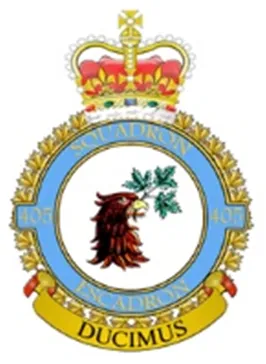
This was the first RCAF bomber squadron to be activated at Driffield, Yorkshire, England and flew its first mission on 12/13 June 1941. At that time it was a member of 4 Group of Bomber Command, and flew successively from Driffield, Pocklington and Topcliffe, Yorkshire, England. With Code Letters LQ It flew Wellington Mk II aircraft until converting to Halifax II in April 1942, in time for the first 1000-bomber raid on Cologne. In October 1942 it was transferred to Coastal Command No 18 Group, flying over the Bay of Biscay from Beaulieu, Hampshire. Returning to Bomber Command, the squadron joined No 6 (RCAF) Group and flew from Topcliffe and Leeming, Yorkshire in March and April 1943. It was then seconded to No. 8 (Pathfinder) Group and for the rest of the war flew from Grandsen Lodge, Bedfordshire, UK . Its first Pathfinder mission was on 26th April 1943, and its last on 25th April 1945. It was slated to become part of the "Tiger Force" to attack Japan, but the surrender of Japan precluded that, and the Squadron was disbanded at Greenwood, Nova Scotia on September 5th, 1945. One of the aircraft that flew briefly with the squadron was the first Canadian-built Lancaster Mk. X, KB700, christened the "Ruhr Express", which was subsequently transferred to 419 Sqn RCAF in December 1943.Overall, the squadron flew 4427 sorties, of which 349 were with Coastal Command and 41 were in Operation Exodus, the repatriation of POWs. Nearly 25000 operational hours were logged together with 12,000 non-operational, and 12,856 tons of bombs were dropped. In the course of operations, 167 aircraft were lost with 937 aircrew. In the course of its history, squadron members were awarded 9 DSO's, 161 DFC's and 24 Bars to DFC's, 38 DFM's, 2 CGM's 2 BEM's and 11 MiD's. Battle Honours were: Fortress Europe 1941-44, France and Germany 1944-45, Biscay Ports 1941-45, Ruhr 1941-45, Berlin 1941; 1943-44, German Ports 1941-45, Normandy 1944, Walcheren, Rhine; Biscay 1942-43.Moyes, Kostenuk and Griffin
Squadron History (Bomber Command Museum PDF)
Maps for Movements of 405 Squadron 1941-45
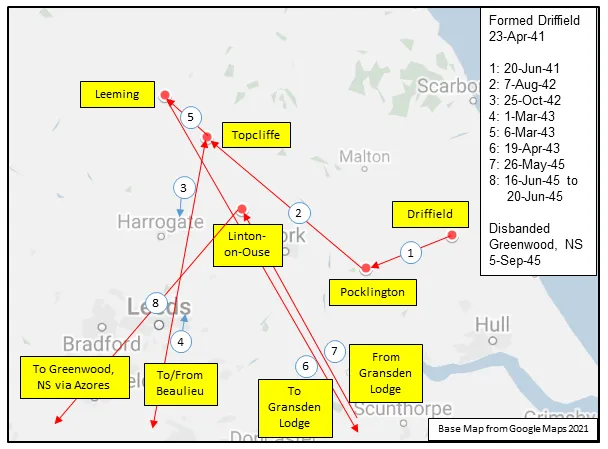 MAP 1: 405 Squadron Movements in Yorkshire 1941-45 (right-click on image to display enlarged in new tab) | 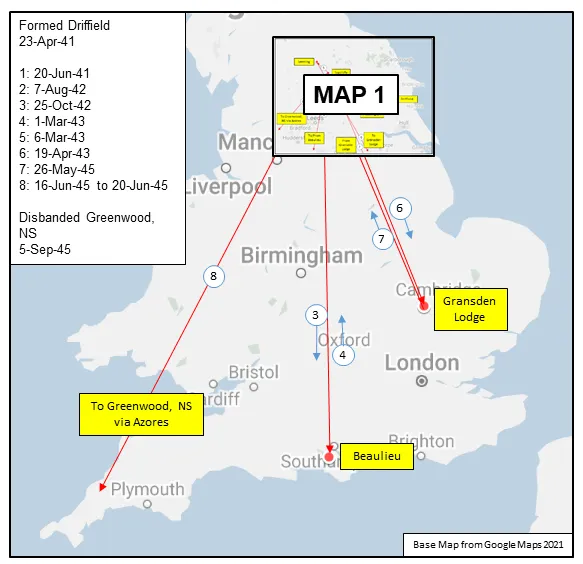 MAP 2: 405 Squadron Movements in England 1941-45 |
405 Sqn History Summary 1941-45
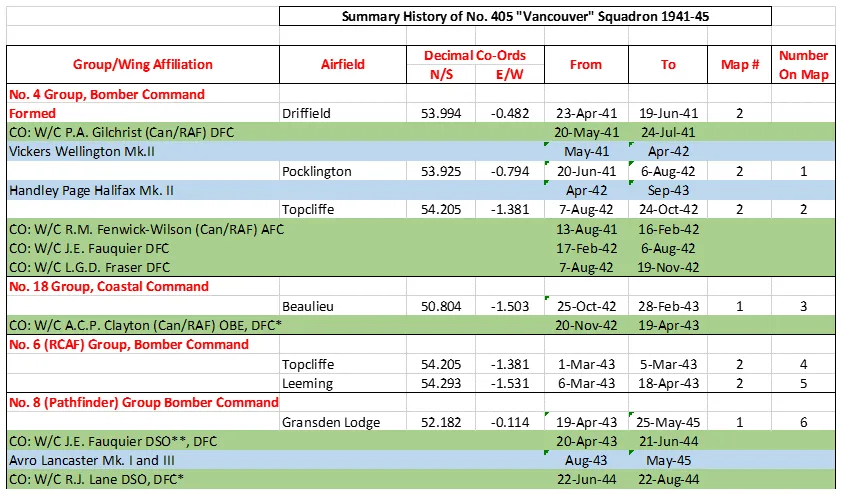
405 Sqn History Summary 1941-45 Page 2

History of the Squadron Post-WWII (Aircraft: Lancaster X, Neptune, Argus I & II, Aurora)
The squadron was re-formed as No 405 (Maritime Reconnaissance) Squadron at Greenwood, Nova Scotia on 31 March 1950, and redesignated No 405 (Maritime Patrol) Sqn on 17 July 1956. The squadron was the first of four formed in Maritime Air Command. It flew modified Lancaster Mk. X aircraft until mid-1955, when they were replaced by P2V7 Lockheed Neptunes, which gave an enhanced anti-submarine capability. and the first to fly Lancaster, Neptune and Argus aircraft on East Coast maritime duty. In April 1958 the squadron was given the distinction of being the first to fly the Canadian-built CP-107 Argus. The squadron made its last flight in the Argus on 10 November 1980 before introducing the CP-140 Aurora. On 1 February 1968 the squadron was integrated into the Canadian Armed Forces. It is now designated No 405 Long Range Patrol Squadron, flying from Greenwood, NS.
The squadron’s primary combat functions are Anti-Submarine Warfare (ASW) and Anti-Surface (ASUW). The Squadron regularly trains for its roles by participating in a number of naval exercises at home and abroad. However, most of its time is taken up in a number of non-combat roles, including search and rescue and support to other government departments, including counter-drug operations with the Royal Canadian Mounted Police (RCMP) and fisheries patrols with the Department of Fisheries and Oceans. Year-round, the Squadron carries out sovereignty patrols covering the Canadian Arctic Archipelago and maritime areas of interest . During these patrols, 405 LRPS crews maintain a constant vigil for ships that discharge pollutants illegal at sea. Similarly, its crews verify that foreign and Canadian fishing vessels abide by their Canadian licensing agreements and report suspected violators to DFO patrol boats.
405 LRPS regularly deploys to a number of allied bases for an assortment of exercises and missions. Among its international training sites are US NAS Keflavik (Iceland), US NAS Sigonella (Sicily, Italy), US NAS Oceana (Virginia, USA), US NAS Jacksonville (Florida, USA), US NAS Roosevelt Roads (Puerto Rico), UK RAF Kinloss (Moray, Scotland),UK RAF Station St. Mawgan (Cornwall, England) and NL NAS Valkenburg (Netherlands).
 Library and Archives Canada Service Files (may not exist)
Library and Archives Canada Service Files (may not exist)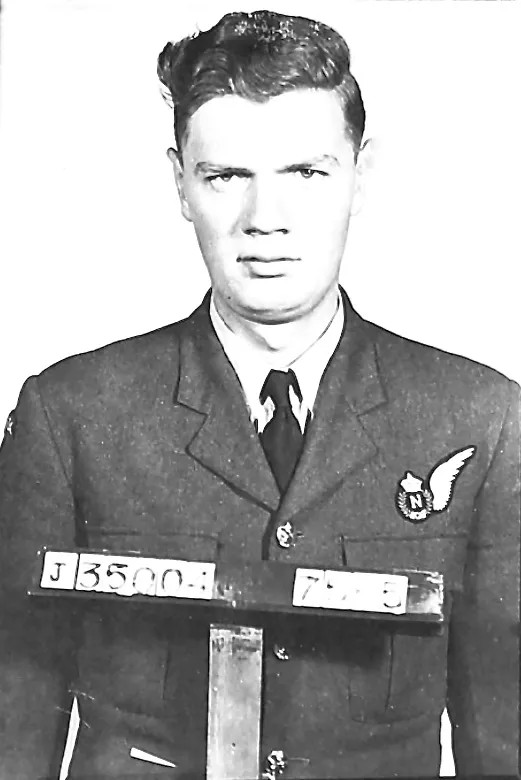
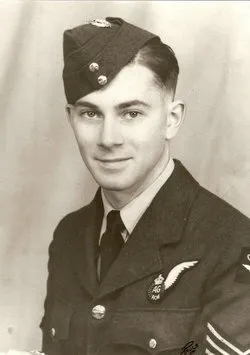
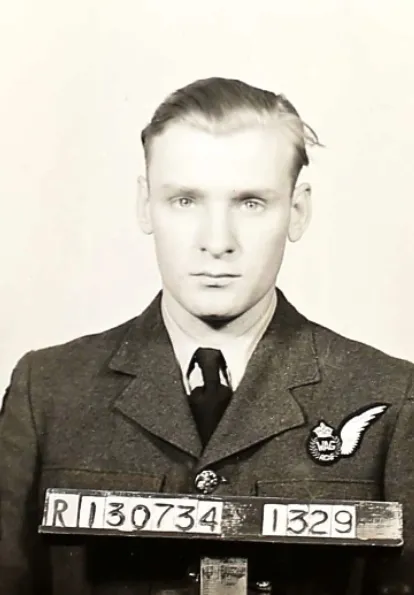
 Lancaster Bomber
Lancaster Bomber Wikipedia
Wikipedia Harold A Skaarup Web Page
Harold A Skaarup Web Page